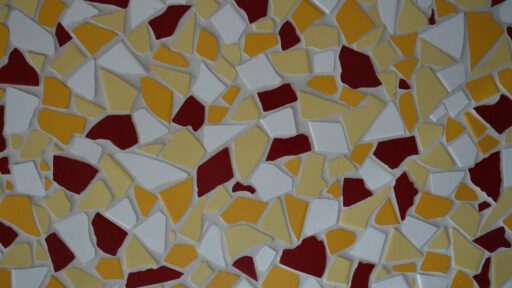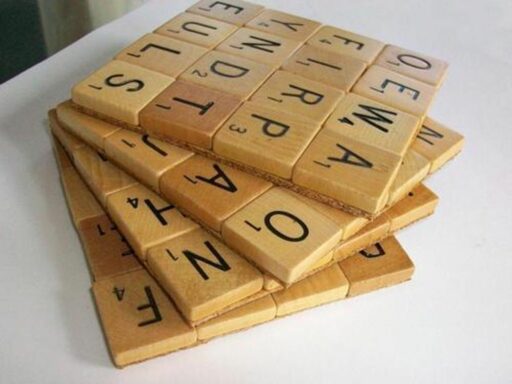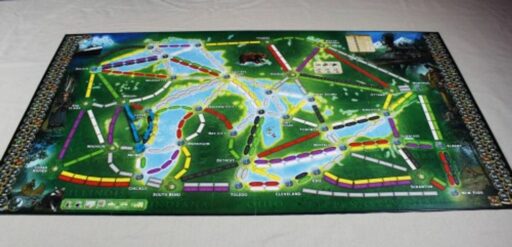In a world where artificial intelligence (AI) is breaking new ground, AlphaGo emerges as a stunning example of AI’s potential in mastering complex challenges. Developed by DeepMind Technologies, AlphaGo is more than just a program that plays the ancient board game Go; it’s a learning entity that continuously evolves, enhancing its gameplay over time. This article delves into the fascinating journey of AlphaGo, from its inception to its remarkable achievements, including its learning process, strategic prowess, and the implications for the future of AI and Go enthusiasts alike.
Key Takeaways
- AlphaGo’s development showcases the fusion of deep learning and reinforcement learning, leading to groundbreaking achievements in AI.
- The program’s capacity for unconventional moves, such as the renowned ‘Move 37’, illustrates its strategic depth and adaptability.
- AlphaGo Zero represents a significant leap in AI development, learning Go from scratch and surpassing human expertise without prior data.
- Personalizing the Go experience with custom boards and pieces can enhance aesthetic appeal and influence gameplay.
- Analyzing past matches and refining strategies through post-game analysis is crucial for improving one’s Go gameplay.
The Evolution of AlphaGo: From Origins to Mastery

The Birth of AlphaGo and Its Foundational Strategies
AlphaGo’s journey began as a project at DeepMind with the goal of cracking one of the oldest and most complex board games. AlphaGo’s adaptive learning mechanisms and strategic acumen were not just about winning a game; they were about reshaping the landscape of artificial intelligence. The foundational strategies of AlphaGo were built upon deep learning and reinforcement learning, enabling it to analyze vast amounts of data and learn from its experiences.
AlphaGo’s development marked a significant milestone in AI, demonstrating an ability to master tasks that require intuition, strategic planning, and abstract thinking.
AlphaGo’s architecture is composed of three key components, each contributing to its decision-making process:
- Deep Neural Networks: To process the game’s patterns and positions.
- Monte Carlo Tree Search: For simulating future moves and outcomes.
- Reinforcement Learning: Allowing AlphaGo to learn from each game it plays, improving over time.
The combination of these elements allowed AlphaGo to not only understand the game of Go but to innovate, creating moves and strategies that were previously unseen in the game’s history.
AlphaGo’s Landmark Victory: The Defining ‘Move 37’
The match against Lee Sedol, one of the world’s most renowned Go players, was a pivotal moment for AlphaGo and the field of artificial intelligence. AlphaGo’s victory, with a score of 4-1, was a clear demonstration of its advanced capabilities. However, it was ‘Move 37’ in the second game that became a symbol of AI’s potential to innovate beyond human imagination.
AlphaGo’s ‘Move 37’ was not just a turning point in the match; it was a watershed moment in the history of artificial intelligence.
The move, which appeared to defy traditional Go strategies, left spectators and experts alike in awe of its depth and foresight. Here is a brief overview of the match outcomes:
| Game | AlphaGo | Lee Sedol | Result |
|---|---|---|---|
| 1 | Win | Loss | AlphaGo |
| 2 | Win | Loss | AlphaGo |
| 3 | Loss | Win | Lee Sedol |
| 4 | Win | Loss | AlphaGo |
| 5 | Win | Loss | AlphaGo |
AlphaGo’s story is a testament to the power of artificial intelligence to challenge and exceed human capabilities in specific domains. Each phase of its development, from its inception to its retirement, has not only redefined what’s possible in AI but also inspired a new generation of researchers and developers.
The Rise of AlphaGo Zero: A New Paradigm in AI Learning
AlphaGo Zero marked a watershed moment in the evolution of artificial intelligence. It learned Go from a blank slate, developing strategies and tactics without the influence of human play. This self-reliant learning approach not only streamlined the AI’s efficiency but also led to more creative and unconventional gameplay.
AlphaGo Zero’s self-improvement trajectory showcased the potential for AI to develop knowledge independently, a concept that could revolutionize various fields beyond Go.
AlphaGo Zero’s achievements can be summarized as follows:
- Learned without human data, purely through self-play
- Demonstrated rapid self-improvement, surpassing all previous versions
- Introduced innovative strategies that redefined Go gameplay
The implications of AlphaGo Zero’s learning capabilities extend far beyond the realm of board games. Its success hints at a future where AI can autonomously master complex systems, offering insights and solutions that might elude human expertise.
Decoding AlphaGo’s Learning Process

Deep Learning and Reinforcement Learning: The Brain of AlphaGo
At the heart of AlphaGo’s prowess lies a sophisticated blend of deep learning and reinforcement learning. These technologies empower AlphaGo to assimilate vast datasets and refine its Go strategies through a process akin to trial and error. The empirical evaluation of AlphaGo Zero, in particular, showcases the formidable performance of self-play reinforcement learning, marking a significant leap in AI’s capability to master complex tasks without human-derived data.
AlphaGo’s architecture is built upon three critical components:
- SL (Supervised Learning) Policy Network: Extracts insights from historical human games.
- RL (Reinforcement Learning) Policy Network: Enhances strategies via self-play.
- Value Network: Assesses board positions to inform future moves.
AlphaGo Zero’s ascension represents a paradigm shift, learning exclusively through self-play and emerging not just as a more potent Go adversary but as a beacon of AI efficiency and creativity.
The strategic depth and adaptability of AlphaGo are not just testaments to its gaming excellence but also to the potential of AI in tackling intricate real-world challenges. Its innovative training and architecture herald a new era for AI systems, where learning and evolution open doors to previously uncharted possibilities.
The Policy Networks: Supervised and Reinforcement Learning
AlphaGo’s proficiency in the game of Go is largely attributed to its sophisticated policy networks. The Supervised Learning (SL) Policy Network is a cornerstone of AlphaGo’s learning process, utilizing human game records to discern patterns and strategies employed by expert players. This network lays the groundwork for AlphaGo’s strategic understanding of the game.
In contrast, the Reinforcement Learning (RL) Policy Network takes the baton from its SL counterpart, engaging in millions of self-play games. Through this rigorous practice, it hones its strategies, learning from both triumphs and setbacks. The RL network’s ability to adapt and refine its gameplay is a testament to its advanced learning capabilities.
AlphaGo’s third critical component, the Rollout Policy Network, functions as a rapid simulator of potential moves. It projects the consequences of these moves, thereby informing AlphaGo’s strategic choices and encouraging the exploration of novel tactics.
The synergy between these networks is what enables AlphaGo to achieve a level of play that not only mimics human expertise but also creates new paradigms in strategic thinking within the realm of Go.
The Value Network: Predicting Winners and Shaping Strategy
The Value Network is a critical component of AlphaGo’s AI, enabling it to predict the outcome of Go games with remarkable accuracy. By evaluating the potential of different positions on the board, the network guides the AI’s decision-making process, shaping its overall strategy.
AlphaGo’s Value Network assesses positions by considering various factors, such as the number of secure territories, potential areas of influence, and the strength of specific groups of stones. This assessment is not just about the current state of play but also includes predictive modeling of future moves.
The integration of the Value Network into AlphaGo’s architecture has been pivotal in its ability to outmaneuver human opponents and other Go programs.
The following table illustrates the impact of the Value Network on AlphaGo’s performance:
| Factor | Influence on Game Outcome |
|---|---|
| Secure Territories | High |
| Areas of Influence | Moderate |
| Group Strength | Variable |
With a 99.8% winning rate against other Go programs and notable victories over top human players, the Value Network’s role in these achievements is undeniable.
Strategic Depth and Adaptability in Go

Unconventional Moves and the Element of Surprise
In the realm of Go, the element of surprise can be a formidable weapon. Unconventional moves often disrupt the flow of the game, forcing opponents to step outside their comfort zones and adapt to new challenges. These moves can redefine the battle for territory and influence on the board, as seen in AlphaGo’s historic ‘Move 37’.
- Unconventional Moves: Creative and unexpected plays that challenge traditional Go strategies.
- Surprise Element: Forces opponents to rethink their approach and adapt quickly.
- Strategic Depth: Adds complexity and nuance to the game, enhancing the mental duel.
The ability to execute moves that defy conventional wisdom not only demonstrates a player’s creativity but also their deep understanding of the game’s intricate dynamics.
While unconventional moves can be risky, they often lead to a shift in momentum and can be the turning point in a closely contested match. Players who master the art of surprise can gain a psychological edge, making them unpredictable and more difficult to defeat.
The Importance of Long-Term Planning in Go
In the realm of Go, the ability to foresee and strategize for future developments on the board is a testament to a player’s mastery. Long-term planning is not just about the immediate gains but also about setting the stage for future moves that can lead to a decisive advantage. The game’s complexity requires a deep understanding of both offensive and defensive tactics, such as preventing the opponent from connecting their stones while ensuring the security of one’s own.
The essence of Go lies in the balance between immediate actions and their long-term implications on the game.
A player’s foresight is often reflected in their ability to evaluate board positions, a skill that is crucial for anticipating the flow of the game. The Value Network, for instance, is a tool that predicts the winner from any given position, highlighting the importance of each move in the broader context of the match. Below is a list of key components that contribute to effective long-term planning in Go:
- Value Network: Evaluates board positions and predicts game outcomes.
- Rollout Policy Network: Simulates possible moves to assess potential outcomes.
- SL (Supervised Learning) Policy Network: Learns from human game records.
- RL (Reinforcement Learning) Policy Network: Refines strategies through self-play.
Adapting Strategies for Elemental Dominance
In the realm of Go, just as in the abstract strategy games that mirror the struggle for elemental dominance, players must adapt their tactics to the ever-shifting landscape of the board. The freedom to roll multiple times on a single turn in some modern board games challenges players to think on their feet and adapt their strategies in real-time, a skill that is equally valuable in Go.
The key to mastering Go lies not only in the ability to plan ahead but also in the flexibility to pivot strategies when the board’s elemental balance shifts.
Understanding the elemental forces at play can be as crucial as recognizing the strength of a well-placed stone. Here’s a simple list to keep in mind when considering the elements of your strategy:
- Fire: Aggressive and consuming, fire strategies involve rapid expansion and overwhelming your opponent.
- Water: Fluid and adaptable, water strategies focus on flexibility and the ability to flow around obstacles.
- Earth: Solid and stable, earth strategies emphasize strong positions and long-term security.
- Wood: Growing and branching, wood strategies rely on expansion and the nurturing of strong formations.
- Metal: Sharp and precise, metal strategies are about cutting through the opponent’s weaknesses with decisive moves.
By customizing your approach to incorporate these elemental concepts, you can enhance your gameplay and bring a new level of depth to your Go experience.
Customizing the Go Experience

Choosing the Right Board and Pieces for You
Selecting the right Go board and pieces is not just a matter of functionality; it’s about enhancing your connection to the game. The tactile sensation of the stones and the visual appeal of the board contribute significantly to the enjoyment and immersion of Go.
When choosing a Go board, consider the material and thickness. Traditional boards are made of wood, with kaya (Japanese nutmeg-yew) being highly prized for its beautiful grain and pleasant aroma. However, more affordable options like bamboo or plastic are also available. The thickness of the board can vary, with thicker boards offering a more substantial feel and sound when placing stones.
The stones themselves come in various materials, such as glass, slate and shell, or plastic. Each material has its own unique feel and sound, which can affect your playing experience. Here’s a quick guide to help you decide:
- Glass stones: Offer a smooth touch and a pleasant clinking sound.
- Slate and shell stones: Provide a traditional and authentic feel, with a heavier touch.
- Plastic stones: Are lightweight and economical, suitable for beginners or casual play.
Remember, the choice of board and stones is a personal one. It should reflect your style and how you connect with the game. Whether you prefer the authenticity of traditional materials or the practicality of modern alternatives, make sure it’s a set that you will enjoy using for years to come.
The Aesthetic Appeal of Go and Its Impact on Gameplay
The aesthetic appeal of Go is not merely a superficial aspect; it significantly influences the player’s experience and can even impact strategic thinking. A well-crafted Go board and stones resonate with the game’s philosophy of simplicity and harmony, enhancing the player’s focus and immersion in the game. The tactile sensation of placing a stone, the visual clarity of the grid, and the overall design of the game set contribute to a more enjoyable and engaging gameplay experience.
- Tactile Quality: The feel of the stones and the board can provide a satisfying sensory experience.
- Visual Clarity: Clear distinctions between stones and lines help in planning moves.
- Design and Craftsmanship: The craftsmanship of the board and stones can reflect the cultural and historical significance of Go.
The usability heuristics applied to board games suggest that a game’s aesthetic qualities can enhance its appeal and usability. A new board game with a novel theme and beautiful pieces can attract attention and provide a sense of novelty.
Understanding the impact of aesthetics on gameplay is crucial for both players and creators. It’s not just about the look; it’s about how the game feels in your hands and how it guides your strategic thought process. The aesthetic-usability effect observed in board games indicates that players are more likely to engage with a game that is visually and tactilely pleasing.
Creating a Personal Connection with the Game
Creating a personal connection with the game of Go extends beyond the strategic depth of gameplay; it involves the tactile and visual elements that contribute to the overall experience. Customizing your Go board and stones is a way to express individuality and enhance the joy of play.
Consider the material and craftsmanship of your Go board and stones. Each choice reflects a part of your personality and can influence the atmosphere of your games. Whether you prefer the classic simplicity of bamboo and Yunzi stones or the modern elegance of glass and rosewood, the options are plentiful.
- Bamboo Go Board: Traditional and eco-friendly
- Yunzi Stones: Dense, with a satisfying ‘clack’
- Glass Stones: Sleek and contemporary
- Rosewood Board: Durable with a rich hue
Incorporating elements of your own design can make the game feel more intimate and engaging. For instance, a board with a grid that subtly highlights your favorite opening strategy can serve as both a conversation starter and a strategic advantage. The design of the game box, too, can be a reflection of your style, potentially incorporating brand arc elements or a specific name for your personalized set, as suggested by enthusiasts on BoardGameGeek.
The joy of Go is not just in the conquest of territory but also in the creation of a space that is uniquely yours. By customizing your Go equipment, you immerse yourself in a world that resonates with your aesthetic and strategic preferences, making every match an extension of your personal narrative.
Analyzing and Improving Your Go Gameplay

Post-Game Analysis: Learning from Your Matches
The practice of post-game analysis is crucial for players aspiring to improve their Go skills. By dissecting each game, players can uncover their strategic patterns and identify areas for improvement. This reflective process often leads to a deeper understanding of one’s play style and the intricacies of Go.
Reflecting on past games allows players to recognize recurring mistakes and to develop strategies that emphasized targeting learning and deliberate practice.
A structured approach to post-game analysis can be outlined as follows:
- Review the entire game, noting key moments and decisions.
- Identify moves that deviated from standard play and understand the reasoning behind them.
- Discuss the game with opponents or peers to gain different perspectives.
- Use software tools to compare your moves with professional games or AI recommendations.
The data in the graph which shows the improvement is from Games where players have actively engaged in post-game analysis, demonstrating the tangible benefits of this practice. As a result, after AI beat them, professional go players got better and more innovative, incorporating new strategies into their repertoire. A game of the board game Go is not just a test of strategic thinking but also an opportunity for personal growth and learning.
Identifying Strategic Patterns and Mistakes
Recognizing the strategic patterns in Go is crucial for improvement, but equally important is identifying the mistakes that can occur during gameplay. One common pitfall is bad minimaxing, where players, even at intermediate or strong levels, make inferior moves in an attempt to minimize the maximum possible loss. This strategy, while sound in principle, can lead to suboptimal play if not executed correctly.
To avoid such errors, players should focus on a few key areas:
- Understanding the impact of each move on the overall board position
- Recognizing when to shift strategies based on the evolving game state
- Learning from past games to identify personal tendencies and correct them
By consistently analyzing your gameplay and recognizing patterns, you can begin to anticipate your opponent’s moves and develop a more robust strategy.
It’s also beneficial to compare your strategies with those of advanced AI programs like KataHex, which may highlight moves that human players typically overlook. This comparison can reveal insights into strategic depth and decision-making processes that can be incorporated into your own gameplay.
Refining Your Go Strategies for Future Games
The journey of mastering Go doesn’t end with a single match. Refining your strategies for future games is a continuous process that involves meticulous analysis and a willingness to adapt. By dissecting your past games, you can uncover patterns and mistakes that may have gone unnoticed during play. This retrospective insight is invaluable for honing your skills and preparing for subsequent challenges.
- Review your opening moves and their outcomes
- Analyze key mid-game transitions
- Reflect on the endgame and scoring phase
Embrace the iterative nature of learning in Go. Each game is a lesson, and each lesson makes you a stronger player.
The Skills Tree at Go Magic offers an interactive and engaging way to improve your Go playing abilities. Here, players can find problems to solve, ranging from basic to advanced, ensuring that your learning path is both comprehensive and tailored to your level of expertise.
Embracing the Future of Go with AI
As we have journeyed through the complexities of Go and the groundbreaking advancements of AI exemplified by AlphaGo, it becomes evident that the ancient game has entered a new era. AlphaGo’s unconventional strategies and deep learning capabilities have not only challenged traditional Go wisdom but have also set a new standard for strategic gameplay. The fusion of technology and tradition in Go offers a glimpse into the potential of AI to enhance human experience and expertise. Whether you are a seasoned Go player or a curious observer, the evolution of this timeless game promises a future where the synergy between human intuition and artificial intelligence continues to unfold in fascinating ways.
Frequently Asked Questions
What is AlphaGo and why is it significant?
AlphaGo is an artificial intelligence program developed by DeepMind Technologies that plays the ancient board game Go. It is significant because it represents a major advancement in AI, being able to learn and improve from its experiences, surpassing human expertise in a complex game.
How did AlphaGo learn to play Go?
AlphaGo’s learning process involved supervised learning from human game records and reinforcement learning through self-play. This combination allowed it to understand and predict game outcomes, refine strategies, and develop innovative moves.
What was ‘Move 37’ and why is it famous?
‘Move 37’ refers to a highly unconventional move made by AlphaGo during its match against Lee Sedol. It was unexpected and demonstrated AlphaGo’s ability to create creative and strategically deep plays that challenged traditional Go wisdom.
What is the difference between AlphaGo and AlphaGo Zero?
AlphaGo learned from human game records and self-play, while AlphaGo Zero learned to play Go from scratch solely through self-play and reinforcement learning. AlphaGo Zero did not use any human game data, making it more powerful, efficient, and innovative.
How can I improve my Go gameplay?
You can improve your Go gameplay by analyzing your past matches, identifying strategic patterns and mistakes, and refining your strategies. Understanding the intricacies of the game and learning from both victories and defeats can make you a stronger player.
Can I customize my Go board and pieces?
Yes, you can personalize your Go board and pieces to reflect your unique style. There are many themes and designs available that not only enhance the aesthetic appeal but can also impact the overall gameplay experience.





